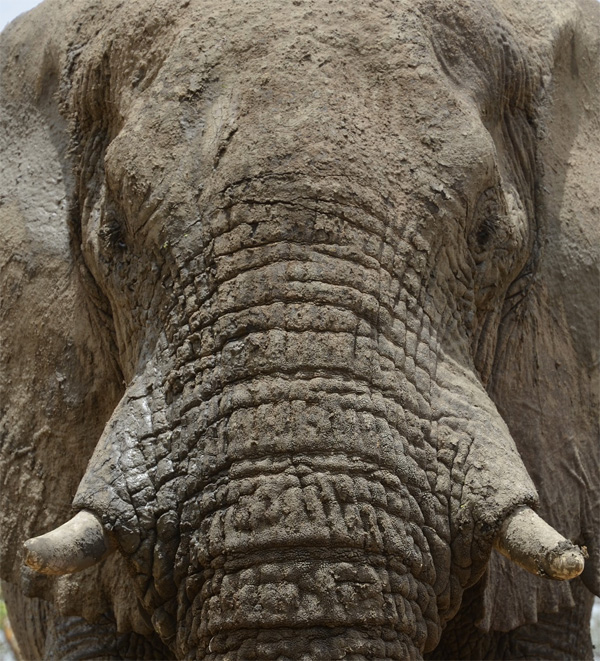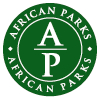O PARCÍCH
Pro uskutečnění své výpravy jsem si vybral dva středoafrické národní parky, z nichž jeden jsem již v minulosti navštívil. Oba jsou spravovány neziskovou organizací African Parks. Navázal jsem s parky spolupráci a vždy několik měsíců v nich působil jako dobrovolník, získával zde materiály
pro svůj dokument a pomáhal, s čím bylo potřeba. Nejprve jsem zavítal do parku Odzala-Kokoua v Kongu a o několik měsíců později do Zakouma v Čadu. Záměrně jsem si vybral velmi rozdílné parky, aby byly mé získané zkušenosti a dokumentární materiál co možná nejrůznorodější. Odzala-Kokoua
je tropický deštný les s roztroušenými přírodními salinami, kde žijí pralesní sloni, Zakouma leží v pásmu suchých stromových a křovinatých savan, kde žijí stáda většího druhu afrického slona, slona savanového. Oba parky jsou domovem stále poměrně velkých populací divokých slonů a v
minulosti platily za jejich baštu. Narůstající pytlácký tlak v posledních letech však další přežití slonů, a nejen slonů, značně ohrožuje. Všechny tři parky leží téměř mimo oblasti lidského osídlení, nezasahuje zde skoro žádná zemědělská činnost ani jiná lidská infrastruktura. Konflikt o
prostor a zdroje mezi divokými slony a lidmi tedy takřka nehrozí. Jediným důvodem masového vyvražďování slonů v těchto parcích je přežívající touha bohatých lidí po slonovině a ochota těch chudých ji pro ně získávat.
Kromě těchto dvou míst, kde jsem byl dlouhodoběji, jsem během expedice navštívil mnohé jiné národní parky. I zde se mi bez výjimky dostalo milého přijetí a vedení mi většinou dovolilo vstupovat a natáčet v parku bez placení a snažilo se mi pomoci všemožnými jinými způsoby. Všem, kteří
můj projekt takto podpořili, patří můj velký dík! Chronologicky jsem procházel těmito parky: Waza, Bénoué, Korup, Nouabalé-Ndoki, Sena-Oura, Lobéké, Dzanga-Sangha, Conkouatti, Mayumba a Loango.

Odzala-Kokoua National Park, Congo
In the heart of the world’s second largest tropical rainforest, second only to the Amazon, lies a vast expanse of protected frontier forest, Odzala-Kokoua National Park. Situated in the north-west of the Republic of Congo, this 13,546 km2 of pristine wilderness is home to the incredible
biological diversity that is characteristic of such an extraordinary and complex ecosystem. The southern part of the park is predominantly a savannah – forest mosaic and forest gallery ecosystem. The centre of the park is dominated by Marantaceae Forest where a high density of gorilla
and elephant are found. Further north, the park is covered by mature rain forest.
One of the unique aspects of this park is its numerous clearings, called ‘bais’, that provide an opportunity to observe the forest wildlife easily where it is normally difficult to see through the dense vegetation in a tropical forest. The majestic Mambili River provides one of the few
access routes to the park. The biological diversity is exceptional, including more than 400 bird species, 114 mammal species and in excess of 4,400 varieties of plants. Of the 16 primate species, it is the gorilla and chimpanzee populations on which OKNP’s reputation rests. Odzala also
boasts numerous herbivore species. These include elephants, numbering in the thousands, and a few populations of hippopotamus.
The pressure on the fauna by the local populations (around 10,000 people living in approximately 70 villages along the periphery of the park) is considerable as hunting represents a critical source of revenue and protein for the local people. The major threats include commercial and
subsistence hunting for bushmeat, elephant poaching for ivory and the construction of roads on the periphery of the park, which exacerbates the problem of poaching as it provides easy access to previously isolated forest. Diseases such as ebola also threaten in particular the great ape
populations.
The area supports the largest forest elephant (Loxodonta cyclotis) population in Central Africa. The most recent survey in 2006 estimated the population to range between 11,000 and 18,000 animals; however the scarcity of recent activity and sightings is a cause for concern. Forest
elephant are considered a keystone species and therefore central to healthy ecosystem functioning. Their protection is thus paramount as their demise would likely exacerbate the decline of many other forest species.
Other herbivore species also abound. In the eastern forests of Odzala, some of the largest populations of forest buffalo (Syncerus caffer nanus) still remain. Healthy populations of bongo antelope (Tragelaphus euryceros) and sitatunga (Tragelaphus spekii) can be found as well as giant
forest hog (Hylochoerus meinertzhageni) and bush pig (Potamochoerus porcus). Among the insectivorous mammals, the giant pangolin (Manis gigantea) and the aardvark (Orycteropus afer) stand out. Odzala remains the only place in the greater neighboring area where spotted hyaena (Crocuta
crocuta) can still be found.
Zakouma National Park, Chad
Zakouma National Park is located in south-eastern Chad, to the west of the town of Am Timan, approximately 800km by road south east of N’djaména. It has been described as one of the last strongholds for Central African wildlife and is considered a major conservation success story.
The park covers an area of 3,054km2 and forms a crucial part of a greater ecosystem of approximately 25,000km2. It falls within the Sudano-Sahelian vegetation zone and represents a vast, flat plain crisscrossed by meandering seasonal watercourses and interspersed with rocky hills and
inselbergs in places.
Due to the availability of water throughout the year in the east of the park, Zakouma is a sanctuary for West and Central African biodiversity. Some 66 mammal species are found in Zakouma, of which 16 are large herbivores. Since African Parks’ involvement in 2010, most species of larger
mammals, including buffalo, giraffe, roan antelope and Lelwel’s hartebeest have increased in number.
Elephant numbers however have dropped from an estimated 4,300 in 2002 to 454 in April 2011, with the vast majority of animals killed between 2006 and 2009. An enormous effort is now being put into protecting this unique Central African population of elephant. Through the protection of
this flagship species, countless other species of fauna and flora are also being protected within this unique Sudano-Sahelian ecosystem.
Zakouma is home to a large variety of mammals including buffalos (Syncerus caffer), giraffes (Giraffa camelopardalis peralta), Roan antelopes (Hippotragus equinus), Tiang antelope (Damaliscus lunatus tiang), Greater kudu (Tragelaphus strepsiceros) and Lelwel’s hartebeest (Alcelaphus
buselaphus lelwel). Other notable mammals include oribi (Ourebia ourebi), Bohor reedbuck (Redunca redunca) and the ground pangolin (Manis temminckii). Among the predators, lion (Panthera leo), leopard (Panthera pardus), cheetah (Acinonyx jubatus) and spotted hyaena (Crocuta crocuta) as
well as smaller predators such as Viverridae species, serval (Leptailurus serval), caracal (Caracal caracal), honey badger (Mellivora capensis) and wildcat (Felis silvestris) occur in the park. Canidae is represented by four species including the Sand or Pale Fox (Vulpes pallida) and the
Wild Dog (Lycaon pictus). Three primates are found, namely the olive baboon (Papio anubis), the patas monkey (Erythrocebus patas) and the tantalus monkey (Chlorocebus tantalus). Mammal species that have gone locally extinct in Zakouma include the black rhino (Diceros bicornis) and
hippopotamus (Hippopotamus amphibius) and within the greater ecosystem, the Derby’s or giant eland (Taurotragus derbianus).
